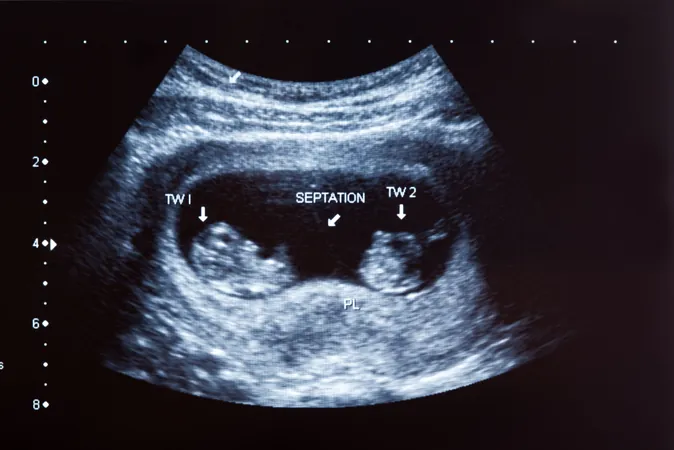
WHO Sounds Alarm on Urgent Need for Improved Treatments and Diagnoses for Life-Threatening Fungal Infections
2025-04-04
Author: John Tan
The World Health Organization (WHO) has recently released two critical reports that underscore the alarming deficiencies in available medicines and diagnostic tests designed to combat invasive fungal infections, such as Candida auris. These gaps have been linked to a startling rise in both the prevalence and mortality rates associated with fungal diseases.
According to WHO statistics, yearly fungal infections exceed 6.5 million cases globally, leading to approximately 3.8 million deaths. This makes invasive fungal infections a significant threat to vulnerable populations, particularly in low- and middle-income countries (LMICs), where healthcare resources are often stretched thin.
Dr. Yukiko Nakatani, WHO’s interim assistant director-general for antimicrobial resistance, emphasized the dire situation, stating, "Invasive fungal infections threaten the lives of the most vulnerable, but countries lack the treatments needed to save lives." The WHO has identified a critical shortage in the pipeline of new antifungal drugs and diagnostic tools, particularly in district-level hospitals in these regions.
A Stagnant Pipeline of Antifungal Drugs
The reports reveal a shocking statistic: over the past decade, only four antifungal medications have received approval from major regulatory agencies in the United States, the European Union, and China. All these newly approved drugs have shown efficacy against at least one of the four critical priority pathogens (CPPs) identified by the WHO, including Aspergillus fumigatus, Candida albicans, Candida auris, and Cryptococcus neoformans. However, only one of these agents meets the WHO's standards for innovation.
Currently, there are nine antifungal drug candidates in various stages of clinical trials, with three in phase 3—an advanced testing phase. Of these candidates, seven demonstrate potential effectiveness against at least one CPP, indicating some progress. Yet, serious concerns persist about the existing medications; they often come with severe side effects, face numerous drug-drug interactions, and lack adequate dosing forms, necessitating extended hospital stays.
Moreover, the report points out an alarming deficit in pediatric studies regarding antifungal treatments, leaving children—another vulnerable demographic—especially unprotected.
Overhauling Diagnostic Practices
In conjunction with the issues surrounding drug availability, the WHO's diagnostics report highlights another significant challenge: the limited access to effective diagnostic tests for fungal infections, particularly in LMICs. While there are tests capable of detecting serious fungal pathogens, their reliance on sophisticated laboratory settings and trained personnel renders them inaccessible to many in need.
WHO stresses that there is an urgent requirement for faster, cheaper, and simpler diagnostic tools that can be implemented at the point-of-care. Additionally, a crucial gap has been identified in the knowledge surrounding antifungal resistance within LMICs, compounded by the inability to conduct adequate testing.
Healthcare professionals often grapple with insufficient training regarding fungal infections and the implications of antifungal resistance, complicating their ability to provide targeted treatments.
To combat these pressing issues, the WHO advocates for enhanced global surveillance, increased financial incentives for drug discovery, and expanded research to identify new targets for potential antifungal medications. This initiative is crucial for fortifying the global response against invasive fungal diseases and addressing the prevalent issue of antifungal resistance.
In conclusion, the WHO emphasizes the urgent need for collective investment in research and development (R&D) for antifungal drugs and diagnostics to ensure better treatment options for patients facing life-threatening fungal infections. The time to act is now—without immediate intervention, we risk losing the battle against these silent but deadly foes.






 Brasil (PT)
Brasil (PT)
 Canada (EN)
Canada (EN)
 Chile (ES)
Chile (ES)
 Česko (CS)
Česko (CS)
 대한민국 (KO)
대한민국 (KO)
 España (ES)
España (ES)
 France (FR)
France (FR)
 Hong Kong (EN)
Hong Kong (EN)
 Italia (IT)
Italia (IT)
 日本 (JA)
日本 (JA)
 Magyarország (HU)
Magyarország (HU)
 Norge (NO)
Norge (NO)
 Polska (PL)
Polska (PL)
 Schweiz (DE)
Schweiz (DE)
 Singapore (EN)
Singapore (EN)
 Sverige (SV)
Sverige (SV)
 Suomi (FI)
Suomi (FI)
 Türkiye (TR)
Türkiye (TR)
 الإمارات العربية المتحدة (AR)
الإمارات العربية المتحدة (AR)